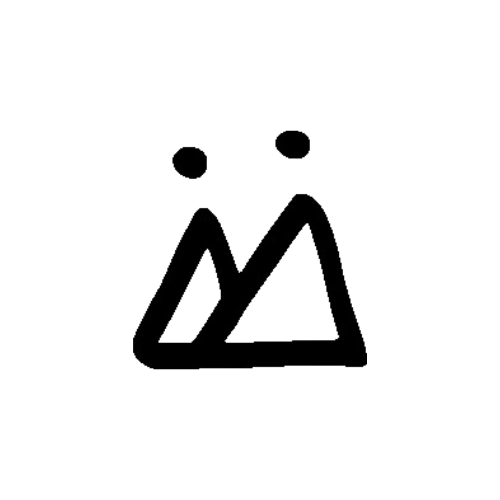Yoga Nidra, often referred to as "yogic sleep," is a guided meditation practice designed to bring about deep physical, mental, and emotional relaxation.
It is a state between wakefulness and sleep where practitioners are guided through stages of relaxation, body awareness, and conscious intention.
The practice helps access the subconscious mind and promotes healing and self-awareness.
Yoga Nidra, as a structured practice, was popularized by Swami Satyananda Saraswati in the mid-20th century.
He developed it based on ancient tantric practices, particularly those involving Nyasa, a ritual where mantras are mentally placed on different parts of the body.
Swami Satyananda refined and adapted these techniques for modern use.
What Are the Different Types of Yoga Nidra?
While Yoga Nidra does not have rigidly classified "types," variations in approach are shaped by the intention and method of the practice.
Key variations include:
1. Satyananda Yoga Nidra:
Developed by Swami Satyananda Saraswati.
A structured and systematic practice including body scan, breath awareness, and visualization.
2. iRest (Integrative Restoration):
Created by Richard Miller.
Emphasizes psychological integration and healing, often used in therapeutic settings like PTSD recovery.
3. Tantric Yoga Nidra:
Based on ancient tantric traditions.
Focuses on deeper spiritual practices and the awakening of consciousness.
4. Modern Yoga Nidra:
Used in wellness settings, emphasizing relaxation, stress relief, or creative visualization.
What Are the Different Elements of Yoga Nidra?
Yoga Nidra typically involves the following elements:
1. Preparation.
Lying in a comfortable position (usually Savasana) and setting up a conducive environment.
2. Sankalpa (Intention).
A positive, heartfelt resolution or intention to guide the practice and life.
3. Body Scan.
Bringing awareness to different parts of the body systematically.
4. Breath Awareness.
Observing natural breath patterns for relaxation.
5. Sensing Opposites.
Exploring contrasting sensations like heaviness and lightness, heat and cold.
6. Visualization.
Guided imagery to evoke specific feelings or states of mind.
7. Integration.
Gradual return to wakefulness with a sense of grounding and awareness.
What Is a Sankalpa?
A sankalpa is a short, positive statement or resolution made during Yoga Nidra.
It reflects a deeply personal goal or affirmation, such as "I am calm and centered" or "I live with purpose and clarity."
It is repeated mentally at the start and end of the practice, aiming to plant a seed for transformation in the subconscious mind.
Benefits of Yoga Nidra.
Yoga Nidra offers numerous physical, mental, and emotional benefits.
Stress Reduction: Activates the parasympathetic nervous system, reducing cortisol levels.
Improved Sleep: Aids those with insomnia by promoting deep relaxation.
Mental Clarity: Enhances focus and cognitive function.
Emotional Healing: Helps process trauma, anxiety, and depression.
Physical Relaxation: Relieves tension and enhances recovery.
Spiritual Growth: Facilitates self-awareness and connection with inner self.
Who Can Practice Yoga Nidra?
Yoga Nidra is suitable for almost everyone, including:
People with stress, anxiety, or sleep issues.
Individuals recovering from physical or emotional trauma.
Beginners in meditation who find sitting practices challenging.
Advanced practitioners seeking deeper self-awareness.
Children and older adults (with modifications as needed).
Who Can Teach Yoga Nidra?
Here at Yoga Borne, we believe that teachers should be qualified and passionate about anything they offer, and our Yoga Nidra class is taught by speciality teachers.
Teachers should also have empathy and the ability to create welcoming, nurturing and inclusive spaces.
Are There Any Contraindications to Yoga Nidra?
While Yoga Nidra is generally safe, certain considerations should be kept in mind:
Deep Trauma: People with unresolved trauma may experience intense emotions; they should practice under a trained professional.
Severe Depression: Some individuals may feel overwhelmed by introspection.
Epilepsy: Avoid practices with rapid visualization or intense sensory triggers, as these may provoke seizures.
Discomfort in Lying Down: Modifications may be needed for those with physical limitations.
We always recommend consulting a healthcare professional if uncertain about practicing any form of Yoga or holistic wellbeing.
YB Yoga Nidra begins again for Autumn / Winter on Sunday 24th November 2024 8-8:30pm.
Sunday evening is the perfect time to snuggle down at home and enjoy this deeply relaxing practice, led my Studio Owner, Karine.
Book via the Glofox app or YB website booking page.












